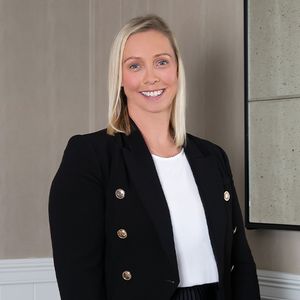
What Are Strata Fees and What Do They Cover?
Choosing strata living opens the door to a lifestyle that’s rich in amenities, convenience and community. However, along with the benefits, there are also the often-overlooked strata fees that accompany this style of living.
Strata fees, or body corporate fees, are contributions owners make to the upkeep and enjoyment of community spaces. They are paid to preserve the common areas, ensuring everyone contributes to the maintenance of the facilities we all enjoy.
These fees are required under strata law. So, if you’re considering buying a strata property in NSW, it’s important to understand how these strata fees might impact you.
As experts in body corporate and strata ownership, we’re here to walk you through the strata experience, empowering you to make informed decisions about your property investments. This article will break down the different types of strata fees, look at how they're calculated and what they cover, and explain the management structure, payment, and enforcement.
What are strata fees?
Strata fees are mandatory contributions that are sometimes referred to as body corporate fees or strata levies. All property owners who live in shared properties like apartment buildings and townhouse complexes must pay them.
These payments help cover the costs of maintaining the shared spaces and facilities.
Why do we pay strata fees?
If you own a home within a strata scheme, your strata fee payments help keep your community a safe, functional and attractive place to live.
Typically, they cover:
- Maintenance costs for shared areas
- Building insurance for common property
- Management fees for a strata manager or caretaker
- Funds for future major repairs through reserve funds (also known as sinking funds or capital works levies)
Without these fees, essential services and repairs within the community could be delayed, potentially lowering your property’s value.
What are the three main types of strata fees?
In NSW, there are three different types of fees that owners may have to pay. They include:
1. Administrative fund levy
This covers the day-to-day running costs of the building, such as cleaning, gardening, minor repairs, utilities for shared areas, and routine safety checks.
2. Capital works levies
Also called a sinking fund, this type of levy allows strata properties to set aside money for large-scale projects like repainting, replacing lifts, or upgrading shared facilities.
3. Special levies
This type of strata fee is required when unexpected expenses arise that can’t be covered by other funds, such as for urgent roof repairs after storm damage.
How are strata fees calculated?
Strata fees vary from property to property because the calculations are based on several key factors. Some of the main ones are:
Unit entitlements
This represents your share of the property compared to other owners’ shares.
Typically, someone in a larger home (like a three-bedroom unit) will pay higher strata fees than someone in a one-bedroom unit in the same building.
Likewise, units with panoramic views usually come with higher fees than smaller, ground-floor units in the same complex.
Amenities
The type and number of amenities included in a strata property also have a major impact on how much you’ll pay.
For instance, if your property includes a concierge, gardens, a swimming pool or a gym, you’ll pay higher strata fees than someone living in a building that doesn't offer those amenities.
Every amenity comes at an additional cost because it requires ongoing maintenance. So, the more you have, the more you’ll need to pay.
Location
If your NSW property is on the beachfront or in the city, you’ll pay higher fees because the costs associated with insuring and maintaining it will likely be higher than those for a suburban property.
In addition, beachfront properties have issues like concrete spalling that require extensive and costly repairs.
Building factors
The age of the building, its condition, its location and the services it provides all factor into the strata fee calculation, as well.
For example, a heritage-listed building in a prime city location will have higher fees due to the specialised maintenance needed to preserve the history. You also need to bear in mind that buildings with pools, lifts, and gyms usually have higher fees.
What do strata fees cover?
Strata fees cover various expenses associated with living in apartment buildings or townhouse complexes. Here are a few examples.
Building maintenance
It takes a lot of work to keep an apartment complex in good condition. That is why strata fees cover upgrades, renovations, repairs and maintenance for the following:
- Entryways
- Lobbies
- Driveways
- Car parks
- Lifts
- Stairwells
- Gardens
- Swimming pools
Insurance
In addition to general maintenance, your strata fees cover liability and insurance for the building and common property. However, you’ll still need to take out contents insurance to protect the interior of your home.
It's a good idea to review your agreement carefully to ensure you understand what your strata insurance covers.
Utilities
You still have to pay your utility bills, but your strata fee covers water and electricity in the common areas.
Other services
Building management employs cleaners to handle daily cleaning tasks within your apartment block or townhouse complex. However, some larger buildings may have an on-site caretaker or facilities manager to handle certain repair tasks.
Your strata fees cover the costs of those employees and the strata company itself.
Who manages and pays strata fees?
Strata management is a complex system overseen by a combination of owners, elected representatives, and professional managers, each with a defined role.
Between them, they ensure the property is well-maintained, the finances are in order, and the community functions smoothly.
Owners’ corporation (body corporate)
This group is made up of all property owners in the strata scheme. You automatically gain membership to it when you complete a purchase.
Some of its main responsibilities include:
- Managing common property
- Approving budgets
- Raising fees
- Keeping financial records
- Setting procedures for resolving disputes
The strata committee
This panel is elected from within the owners’ corporation. It typically includes a chairperson, secretary, and treasurer.
Typically, they handle:
- Decision-making between annual general meetings
- The approval of minor works
- Communications with owners and the strata manager
The strata manager
Usually, this role is performed by a paid professional who is engaged to assist the committee.
The strata manager is charged with:
- Setting and chairing meetings
- Dealing with insurance
- Organising repairs
- Paying invoices
- Preparing and distributing budgets and financial statements
- Ensuring compliance with local regulations
Who pays the fees
Strata fees or levies are mandatory for all unit owners in a strata property. While renters don’t pay strata fees directly, landlords often factor them into rent.
Payments are most commonly made on a quarterly basis. However, some schemes allow monthly or annual arrangements.
Are strata fees worth it?
Many buyers see strata fee costs as a worthwhile investment. That’s because they believe the fees deliver notable benefits in comparison to what you get with standalone property ownership.
Some of the main benefits include:
- Low-maintenance living: There’s no need to mow lawns, clean gutters, or fix the roof yourself.
- Shared access to premium facilities: You can enjoy amenities like a swimming pool or gym without having to pay outright for them.
- Cost-effective solution in high-demand suburbs: By sharing expenses in this way, it makes living in sought-after areas more affordable.
- Protection of long-term value through proactive maintenance: Well-funded strata schemes can help preserve and even enhance property value over time.
It’s important to understand that low fees don’t always mean you’re getting a good value. Instead, they can sometimes indicate poor maintenance or underfunding.
That’s why you should always inspect common areas and review the strata financial plan. This ensures the property is well-managed and that any major works are planned accordingly.
What is a strata management company?
A strata management company is a professional entity hired by an owners’ corporation. They are primarily engaged to manage the administrative, financial and maintenance aspects of a strata scheme.
Strata consultants act as the day-to-day operators of the property. They have the experience required to deal with scenarios such as:
- Dispute resolution: They’re skilled in handling conflicts that arise between residents. It's also their job to ensure resolutions are fair and in line with community guidelines.
- Property value protection: Through the effective management and maintenance of the property, they can help maintain or even increase its value.
- Community-focused operations: Strata management prioritises the well-being of the entire community, making decisions that benefit all owners collectively.
- Administration: They have the expertise to perform proper administration. This includes financial management, legal compliance and consistent communication.
How strata fee budgets are set
The strata manager is responsible for preparing a yearly budget. This is presented at the AGM and voted on by members.
Creating this budget involves forecasting expenses by assessing:
- The building’s needs
- Past budgets
- Both routine upkeep and larger repairs
Funds are allocated to the administrative fund for day-to-day costs. Major projects are directed to the capital works fund.
A thorough building assessment helps identify upcoming repairs. In addition, maintaining a healthy sinking fund can protect owners from sudden special levies. They cover unplanned costs that aren’t met by existing funds. Usually, they’re approved at general meetings.
Strata fee payment schedules and penalties
Strata fees are normally invoiced quarterly. These contributions are mandatory for all property owners.
The strata management team has the power to enforce payment and levy fines. If you don't pay your strata levies in NSW, your board can apply a penalty of up to 10% annually. (Your agreement will set out a fixed fine rate.) Continued non-payment of unpaid levies may lead to formal debt recovery, which can include legal action. In severe cases, the process can escalate to necessitate the forced sale of the property to recover outstanding amounts.
How strata fees impact property value
Strata fees and property value are closely connected.
On average, strata fees in NSW range from 0.3% to 0.7% of a property’s value. However, higher-value properties typically attract higher fees due to larger unit entitlements, premium facilities and better maintenance standards.
Well-funded strata schemes can help maintain and even enhance property value by ensuring the proactive upkeep of common property. Conversely, while unusually low strata fees may seem appealing, they can signal underfunding, poor maintenance or deferred repairs. All of these can reduce a property’s appeal and market price over time.
If you aren't sure whether the strata fees you’re required to pay are fair, compare them with similar buildings in the area. To gain an accurate comparison, remember to factor in your property’s age, size, location and the amenities it has.
Though strata fees increase over time, it's not usually a drastic increase. However, you should still factor that in when working on your budget.
Quick tips for buyers
Before committing to a purchase in a strata scheme, there are a few things you should consider. It’s a good idea to:
- Review the strata report and 10-year capital works plan
- Check recent meeting minutes for planned repairs or disputes
- Inspect common property for cleanliness and functionality
- Compare the levies with similar buildings nearby
- Ask if any special levies are planned
It’s also worth taking a closer look at the building’s management and finances. This can give you peace of mind that comes with knowing the property is well-maintained, and it can help you avoid unexpected costs.
Final thoughts on strata fees
Strata living offers a lifestyle that’s full of convenience and perks, all of which are managed through your strata fees.
You don't need to worry about maintenance work, like changing lightbulbs in the stairwell or unexpected lift repairs. Instead, with a dedicated strata corporation manager overseeing the upkeep, your home and common areas will always be well-maintained.
DiJones has more than 30 years of experience in the Sydney real estate industry. Contact us today to learn more about how we can help you with your strata living experience, or for further support.
FAQs
Are strata fees tax-deductible?
If you own the property and live there, strata fees aren’t tax-deductible. However, if you're a property investor, they might be. A tax professional will be able to confirm whether they are.
What does strata insurance cover?
Residential strata insurance typically covers many things, including the building, common areas, gates, fencing, garages, and shared amenities. Always check the policy to ensure your personal insurance covers what the strata insurance doesn't.
How can I resolve disputes with other strata owners or the strata committee?
Every strata body should have an established structure to process disputes and complaints. If you ever have a dispute with other unit owners or the committee, consult the official process to resolve it.
Can I challenge a special assessment?
A special assessment is a one-time levy to cover a shortfall in the budget and is generally the result of a large, unexpected cost. You cannot challenge a special levy because these are passed via resolution at general meetings.
Does everyone in a strata pay the same amount?
No, fees are based on unit entitlements. Therefore, larger or higher-value properties incur higher fees than smaller ones do.
Can I negotiate my strata fees?
Individual fees can’t be negotiated. They’re set by the owners’ corporation and approved at the annual general meeting.
Was this content helpful to you?






